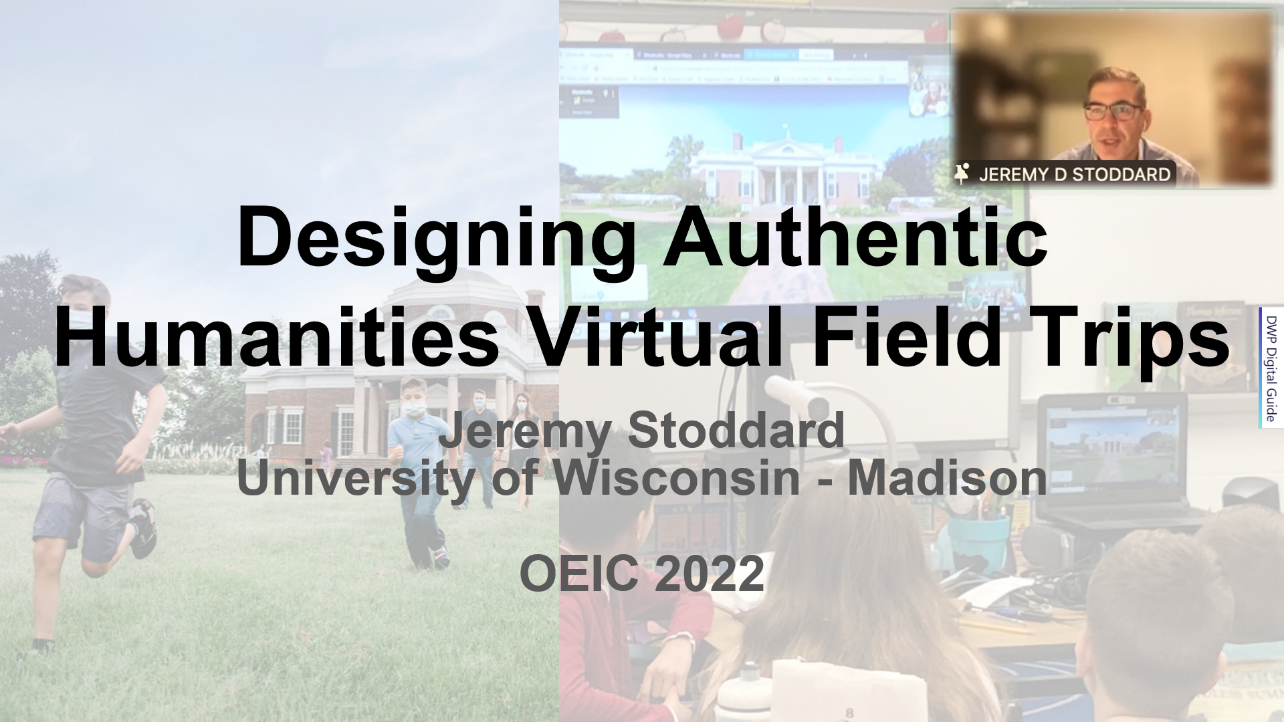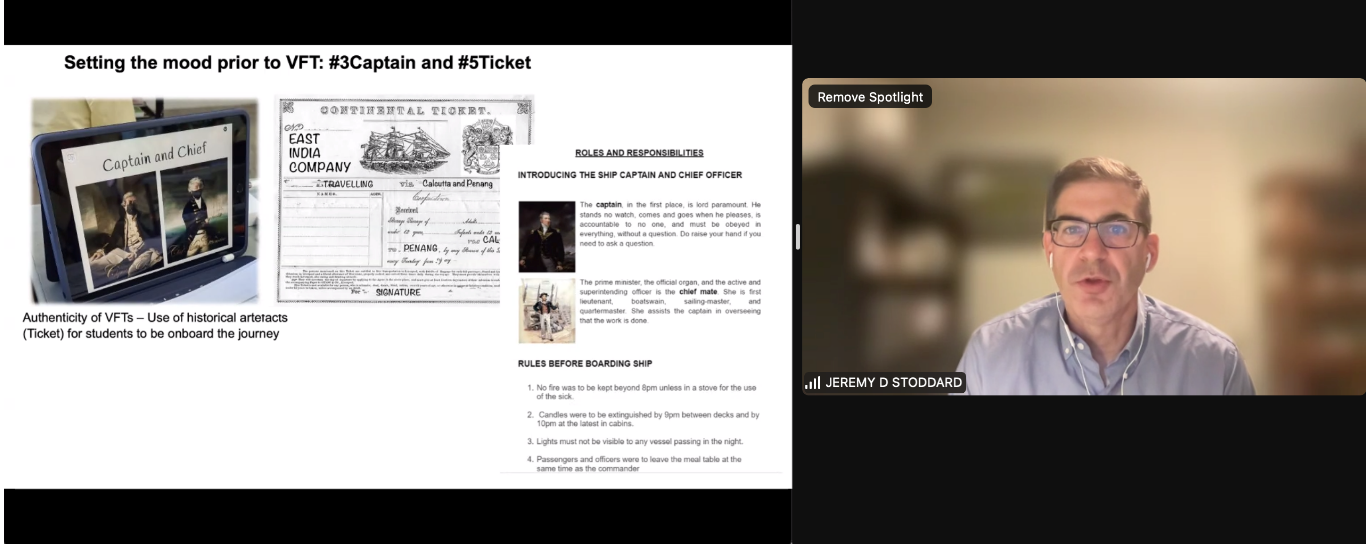Professor Jeremy Stoddard (2022)
Professor Jeremy Stoddard (2022)
AST’s 30th OEIC/R
Jeremy Stoddard is Professor of Curriculum & Instruction at the University of Wisconsin — Madison. His research interest lies in how to engage young people in developing an epistemological understanding of the nature of media (i.e., beyond a traditional notion of media literacy), how media transforms the nature of knowledge and engagement in the disciplines of history and politics as well as how media can be used to engage students in the practices and knowledge of these disciplines. He has also co-authored or co-edited three books, including ‘Teaching Difficult History Through Film’ (Routledge, 2018) and ‘Teaching History with Museums’ (Routledge, 2017) which provide an introduction of the rich pedagogical power of museums and historic sites.
During his engagement as AST’s 30th OEIC/R Outstanding Educator, Professor Stoddard and our Master Teacher supporting the programme, Mr Lloyd Yeo, engaged in rich dialogues to further contextualise the various principles of designing authentic virtual trips shared by Professor Stoddard for application in the Singapore schools. Apart from conducting a workshop, Professor Stoddard had also collaborated with two local Teacher Collaborators, Mr Samuel Wee (Lead Teacher/History, Ping Yi Secondary School) and Mr Ezal Sani (Lead Teacher/History, Fairfield Methodist (Secondary) School) to apply these principles in their design of virtual field trips beyond their history classrooms.
Overview of Workshop on 30 June 2022
Professor Stoddard’s workshop titled ‘Designing Authentic Virtual Field Trips (VFTs) for the History Classroom’ comprised one online synchronous session that provided history teachers with an overview of the principles for developing authentic virtual field trips, with real-life examples and considerations from Mr Wee’s and Mr Ezal’s lesson demonstrations.


By exploring questions such as ‘How do historic sites commemorate particular stories or perspectives?’ and ‘How are museums and historic sites designed to tell particular historical narratives for intended audiences?’, Professor Stoddard engaged the participants to think about how disciplinary thinking can be utilised and how these design principles can frame students’ historical inquiry when they adapt or design their own virtual learning journeys.
Through the concurrent breakout sessions, the participants had the opportunity to choose to learn from either one of our Teacher Collaborators on how they designed their virtual field trips in their history classrooms.
Mr Wee shared how he created a virtual learning journey package for his students to explore the historical significance of the Berlin Wall, titled ‘Seeing through the Wall, a Tale of Two Cities’.

Simultaneously, Mr Ezal presented his lesson package whereby his students could experience the voyage, like the crew onboard the Indiana who visited the various ports in 1800s, through both the teacher-led and students’ self-directed activities using Google Earth and the ‘360 Virtual Tour’ software.

The participants provided feedback that they were grateful for the generous sharing by Professor Stoddard, Mr Wee and Mr Ezal in making history come alive at the workshop. They also shared that the design principles were useful in their design and planning of future virtual field trips.
Symposium on 16 August 2022
Professor Stoddard’s sharing at the online symposium titled ‘Bridging Time and Place in a History Classroom through Mixed Reality Environments’ allowed the participants to discover the various technologies such as Augmented Reality, Virtual Reality and Artificial Intelligence that can be used to bring the physical world into the history classroom virtually. Participants also learnt how to inculcate the 21st century competencies in their students by engaging them in critical and reflective inquiry through the use of mixed reality environments.
We are honoured to have the opportunity to interact and work with Professor Jeremy Stoddard through the OEIC Programme and we would like to thank him for his generosity in sharing his insights with our local educators.

